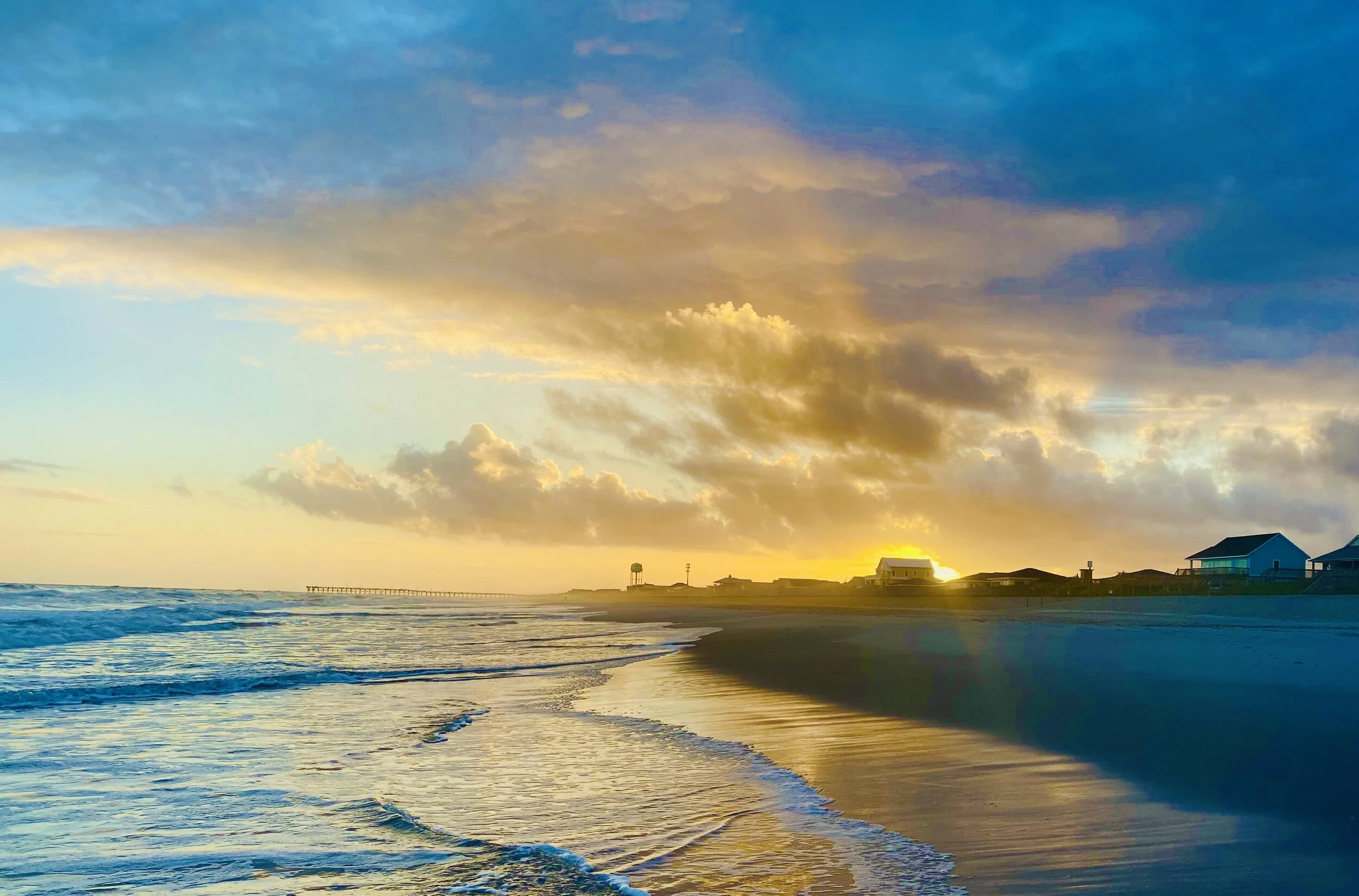In a recent survey by TripAdvisor, Topsail Beach won the Readers’ Choice Award as
“Best Little Beach Town” in the USA.
“Without huge hotels or glitzy attraction, Topsail is a place to enjoy the beach in its purest, simplest form — without the crowds or chaos of some popular coastal towns. If your idea of paradise involves long days spent relaxing in the sun, lazily casting a line or catching up on your to-read list, you’ll love the island’s private, cozy cottages and beachside retreats just steps from the ocean.”
History of Topsail Beach
Situated at the southern end of Topsail Island, off the coast of southeastern North Carolina, the Town of Topsail Beach is the smallest of the three communities located on the 26-mile long island. North Topsail Beach occupies the northernmost section, and Surf City, the largest town on the island, is in the center. The Island is just off US Highway 17, about half-way between Wilmington and Jacksonville. Topsail Island has a rich and varied history.
Although folklore has it that the island was named Topsail (pronounced Tops'l) because pirate ships hid behind the island with their topsails visible from the sea, the name came from New Topsail Inlet. This inlet's name can be found on early navigational charts with the other Topsail Inlet located in Beaufort, N.C. Soon after J.G. Anderson developed the southernmost end of the island and named it New Topsail Beach, the island has been called Topsail.
Prior to World War II, the only access to Topsail Island was by boat. Area residents frequently made this short trip and picnicked on the sandy shores of the Atlantic Ocean. Local farmers are said to have driven their livestock across the waterways to graze on wild grass. Treasure hunters searched for Blackbeard’s infamous buried treasure throughout the maritime forests which covered the island. During the early part of the 1900's a few structures, less than a dozen, were built along the sound and were used as shelter for fishing trips and summer vacations.
At the beginning of World War II the U.S. Army built a large temporary anti-aircraft training base at Holly Ridge and took possession of the island. They built the road from Camp David to the sound and installed a floating bridge across the Intracoastal Waterway where the present bridge is located. They also erected training facilities and support buildings in what is now the Surf City business district.
Immediately after the war, the Navy took possession of the island and began a joint project with Johns Hopkins University known as Operation Bumblebee which was an early guided missile development program. Over 200 missiles were test fired. The missile assembly building is located on the sound at Channel Blvd. and Flake Ave. in the Topsail Beach business district which is now used as a museum and meeting center. The launch pad is used as a patio for the Jolly Roger Motel. Several missile tracking towers still stand along the island. The testing program was dismantled in 1948 and the island was given back to the original owners. The roads and bridge were left intact and so began the development of the island.
Incorporated in 1963, the Town of Topsail Beach boasts a friendly, family oriented style of beach living. High rise development is not allowed, beautification is encouraged, and conservation of the island environment is a top priority. There are over 1200 homes, but only about 500 year-round residents. The seasonal influx of tourists increases the population to about 7,000, which helps sustain the town's motels, restaurants, gift shops, fishing pier and other businesses.
http://www.topsailbeach.org/About-Topsail-Beach/History-of-Topsail-Beach
The Historical Society
The Historical Society is a thriving nonprofit organization with over 380 members. It is the proud owner of the Assembly Building and the Missiles & More Museum, and its mission continues to be to document and preserve the history of Topsail Island.






















